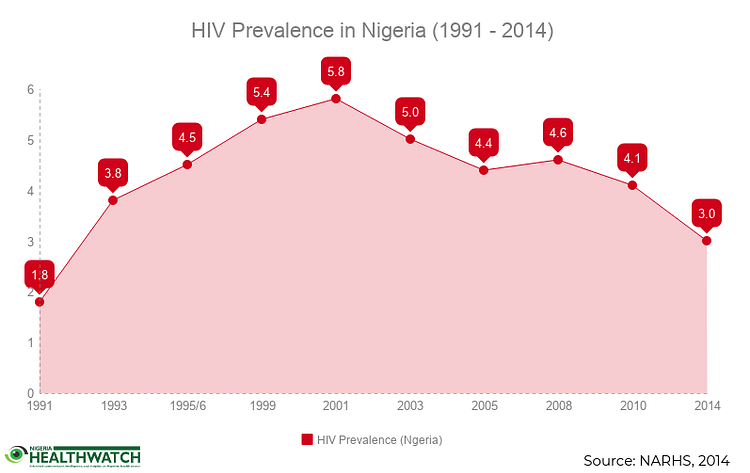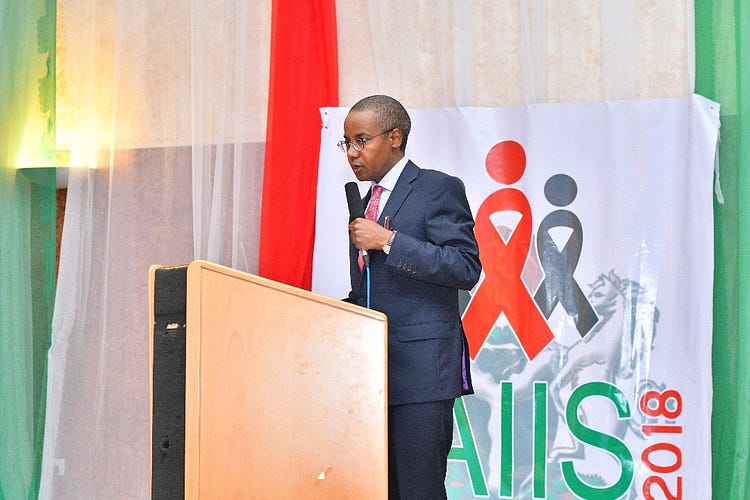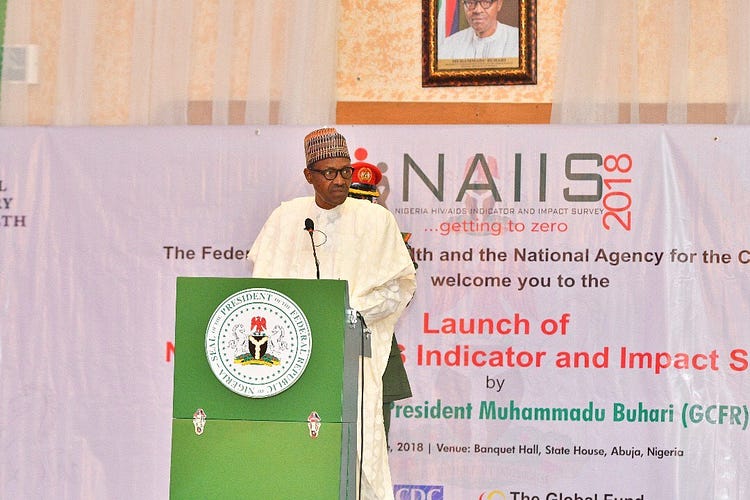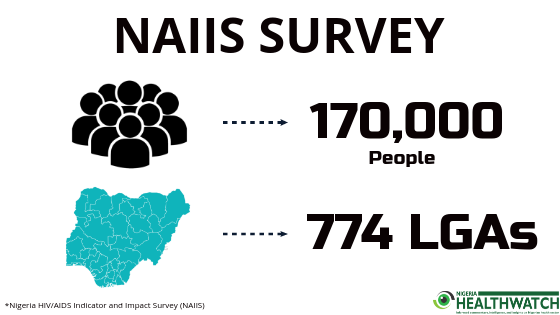HIV prevalence rates in Nigeria have been the topic of much debate. The bone of contention, according to several authorities, is that the current HIV prevalence rates being quoted for some parts of Nigeria might not reflect reality. While surveys done in the past suggest that there should be about 3.5 million Nigerians infected, data from service delivery has not supported this. Organisations tasked with the treatment of patients with HIV have long complained that they simply cannot find the cases, but for many years, no one believed them. They were urged to be “innovative”, to go to “hard to reach areas” and to target “key populations”.
Understanding the prevalence of HIV in Nigeria is more important now than ever before. The official HIV prevalence by UNAIDS in Nigeria is 3.2% among the adult population, giving a total estimate of 3.4 million Nigerians living with HIV. The most recent national prevalence survey for HIV carried out in Nigeria in 2013/14, undertaken by the National AIDS and STI Control Programme of the Federal Ministry of Health, put overall HIV prevalence among women attending antenatal clinics in Nigeria at 3.0%. In Nigeria, national HIV estimates have been primarily on surveys that focus on pregnant women who attend a selected number of sentinel antenatal clinics. However, for many years the limitation of ANC surveys as providing over-estimates has been recognized by many countries.

Without ascertaining HIV prevalence rates in Nigeria, budgeting for HIV care and treatment will continue to be a problem. Knowing accurate HIV prevalence rates in various states in Nigeria would mean that resources can be allocated more effectively and any possible fraud in the HIV treatment supply chain can be effectively plugged. It was time to act.
It is against this background that the National Agency for the Control of AIDS (NACA) launched what is the largest ever population-based HIV/AIDS survey carried out anywhere in the world- the Nigeria HIV/AIDS Indicator and Impact survey (NAIIS). Launched on Thursday, 28th June 2018, the survey will have a sample size of about 170,000 people across Nigeria’s 774 Local Government Areas. NAIIS is expected to determine an accurate estimate of people living with HIV/AIDS in Nigeria, according to NACA’s Director General, Dr. Sani Aliyu. The estimation of the number of people infected with HIV is a very important process for purposes of advocacy, programme planning, and evaluation.
United States Ambassador to Nigeria, Mr. Stuart Symington stated at the launch that keeping HIV positive people on treatment is the most effective way to fight the disease until a vaccine for HIV can be developed. Worldwide, about 36.7 million people were living with the HIV, as of December 2016 and over one million people lost their lives that year. Over 26 million people living with HIV are in sub-Saharan Africa.

Dr. Aliyu noted at the launch that an estimated 30% of Nigerians living with HIV/AIDS are on treatment, meaning the remaining 70%, or just over 2 million people, either do not know they are infected or are not presenting themselves for care. However, these estimates are based on a population of infected people of about 3.5 million. If we estimate that there are fewer people infected, then Nigeria would be seen to be doing better with its treatment programme.
The goal of the Nigerian HIV/AIDS indicator and Impact survey is to reveal the real burden and impact of HIV/AIDS in every state and LGA of the country. Knowing the actual and precise geographical burden will help the government and development partners to channel resources more efficiently and track progress made over specific periods of time.
Supported by the US government, The Global Fund, UNAIDs and other partners, NAIIS is expected to run for six months with 2,000 research enumerators collecting data from thousands of households across the country. The results, which are expected to be ready early 2019, will help the country determine the actual burden of HIV/AIDs and take ownership of management of the disease, which until now has largely been funded by donors. For instance, The United States Government alone has spent over $4billion in providing care from Laboratory testing to drugs from 2004 to date.

At the 72nd session of the UN General Assembly in 2017, President Muhammadu Buhari pledged to provide Antiretroviral treatment to 50,000 Nigerians living with HIV/AIDs every year, beginning from 2018. This commitment, if fully implemented, is only the tip of the iceberg compared to the high burden, but will potentially allow Nigeria begin to take ownership for the management of HIV/AIDs and should push us to achieve the set target of ending AIDS by 2030. President Buhari, who was the guest speaker at the launch, said the NAIIS Survey comes at an opportune time as the country is navigating towards the implementation phase of the National Health Act.

As the first phase of the Survey kicks off with enumerators going around the country to collect data, there are high expectations that this survey will be the vehicle for HIV/AIDs care to be taken to the doorsteps of people who need it and will for a long time serve as the reference for policy direction towards eliminating the disease.
We cannot manage what we do not measure properly. With a population as large as ours, these things matter, as a 1% difference in HIV prevalence equates to about 1 million people. An accurate estimate of prevalence, therefore matters for everything from resource allocation to measurement of impact.



ANC Sero-prevalence survey is not the only survey use in generating our estimates, we use it with the NARHS which is a survey for the general population. Even though the prevalence generated for the s tates in these surveys contribute greatly to the estimated PLHIV, it is good to know that Nigeria demographic data which is one of the data the spectrum use to generate estimate also contribute to this big number of PLHIV.
This is a long awaited and welcome development and I congratulate the government and peoples of Nigeria for the great step. I also appreciate our international partners who have made it possible. We look forward to accurate, clear and relable data that will be indeed be our reference point for years to come. I will like to urge all field hands, collators and analysis staff to work hard with sincerity so that we can achieve this lofty objective. I wish us all the best. Patrick MATEMILOLA
“…provide Antiretroviral treatment to 50,000 Nigerians living with HIV/AIDs every year, beginning from 2018.” This statement sounds like we are doing some people a favor. It is our responsibility as a government to ensure universal health coverage to the citizenry, including antiretroviral treatment for ALL who need to be placed on treatment.
Thanks to the Nigeria HealthWatch for disseminating this info and congratulations to the Nigeria government and president Muhammadu Buhari for this move.
This is a welcoming development in Nigerian Health srctor. We wish to partner with you
This is a wonderful opportunity we are looking for in Nigeria for long time.
I fear just one thing, and that is that after a successful survey, the Nigerian Government takes over the management of PLHIV. If in 2018, Mr president is promising to manage just 50,000 PLHIV, then we are in trouble. Please donor agents, do not hang your boots just yet.
I am really a certified Community Health Extension worker with NYSC Certificate and I have and Interest to join you. I lives in Sokoto state wit phone number 08060606781
please i need the job for my use